When Lari Merritt, operator of Mutinondo Wilderness, asked me to join her and three friends on a 78-mile backpacking trip across the Great Rift Valley (GRV) in Zambia, how could I say no?
The timing was perfect at winter’s end with cool nights and pleasant days. The route started from the remote, 25K acre Mutinondo conservation area on the Machinga Escarpment and descended nearly 3,281 feet to the Luangwa River Valley and across South Luangwa National Park (SLNP).
The Landscape
Western Zambia’s Luangwa Valley is an ancient landscape formed by violent geologic events that ripped the earth apart to form a great chasm. The GRV is a series of faults and tears that extend from the Red Sea across East and Southern Africa forming some of the most dramatic landscapes and unique ecosystems on the continent.
Mutinondo is located on the edge of the GRV’s northwestern escarpment, the Muchinga Mountains. This extraordinary landscape is formed by exposed ancient granite “whalebacks” or inselbergs that continue northeast towards the Tanzanian border, spanning approximately 540 miles.

The Mulungushi River forms the northwestern boundary of the SLNP and is fed by rivers from the Muchingas. As these streams slow, they deposit massive amounts of sediment across a valley floor filled with flat-topped acacia trees, elephants, big cats, and herds of antelope.
A granite plateau, rolling hills, old river banks, and oxbow lakes bounded by Miombo and Mopane woodlands, thick grasslands, and lush riverine forests form unique, world-renowned ecosystems.
My Gear
For this six-day trip, I carried my gear in a Hyperlite Mountain Gear Windrider 2400 pack. My 6 lbs of food weight included Mountain House dehydrated meals, muesli, trail mix, power bars, instant coffee, and tea bags. The total non-food weight was almost 11 lbs., including a 1 lb. utility K-bar 7 inch open blade knife that I attached to my pack for easy access and phone, camera, 20,000 mah power-bank and batteries. A pair of zip-off long pants, one long-sleeve shirt and Outdoor Research sleeves for sun and tsetse fly protection, two quick dry short-sleeve shirts, two pair of Darn Tough socks and liners, calf-high OR gaiters, and Oboz trail runners were my clothes. The gaiters kept the grass and grit out of my shoes, protected my legs, and reduced shoelace snags. Plus, they came in handy to sit on during lunch breaks and to place under my Thermarest Neoair Xlite sleeping pad to reduce the chance of puncture from nasty thorns. The total weight carried and worn was just under 21 lbs.

The Trip
This was freedom – a true escape from the routine of everyday life. My senses opened to what was happening around me and my mind had time and space to notice the details – signs, sounds, and creatures – that are easily missed. Focusing on the flora, fauna, and the sights and sounds of the animals, I started to better understand what makes these complex ecosystems so special and to experience the Zambian wilderness in a natural way – to feel it and be part of it.
The Start (Days One and Two)
After obligatory beginning-of-the-adventure group photos, we set off. Following well-established trails, the rangers led us through the granite whalebacks and, within an hour, we were at the eastern Mutinondo boundary. There, we abandoned the known and stepped single file into the bush.
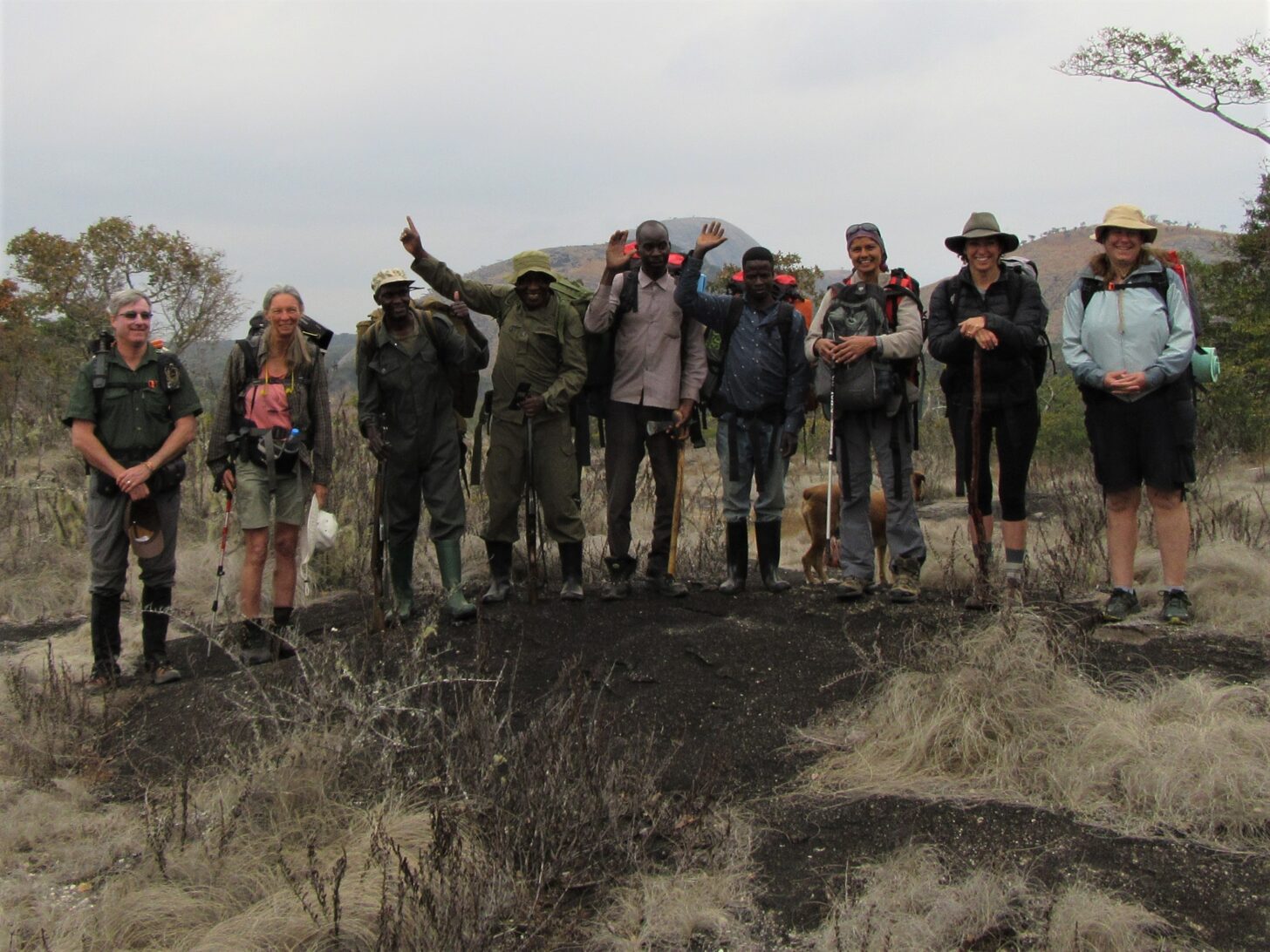
Navigating through the waist-high grass and shrubs, we were slowly swallowed by the Central Zambezi Miombo Forest. Along the escarpment, rock-capped overhangs provided 180-degree views of endless uninterrupted forests that provoked silent contemplation of the earth’s beauty and vastness.
Though we caught only fleeting glimpses of a klipspringer and a few roan antelope, there were abundant signs bushbuck, bushpig, warthog, and porcupines. Relentless poaching has made the animals skittish and they quickly disappear.
At around 12.5 miles in, we dropped our packs next to a series of rapids and pools on the Wateshi River, soaked our feet, had a drink of cool water, and set up our first camp.

After checking for crocodiles, we quickly bathed in the river. We admired our first sunset as we sat by the crackling fire, sipping tea and reflecting on the day’s adventures. With a full belly, I crawled into my sleeping bag and fell asleep listening to soothing sounds of the rapids, mesmerized by the vast night sky. This is malaria territory, so I tented a mosquito net to keep from getting that nasty illness. Again.
On day two, we set off before dawn after breaking camp and making coffee. Following the Wateshi downstream, we crossed at a shallow ford. We spotted the first evidence of illegal wildlife poaching at the top of the ridge on the other side. It was a wooden bushmeat drying rack made from trees cut nearby.

Again, we covered more than 12.5 miles before setting up our second camp inside a bend of an oxbow lake of the Mupamadzi River. Since it was dusk and prime time for hunting predators, we wasted no time settling in and adjusting our attitudes with tea and a meal. The crickets and fiery-necked nightjars sang us to sleep at night.
Midway (Days Three and Four)
Day three started with crossing the Mupamadzi River only a quarter-mile east from where we camped. Before crossing any river, it is imperative to check for elephants, African buffalo, and crocs, otherwise it could be your last day trekking.
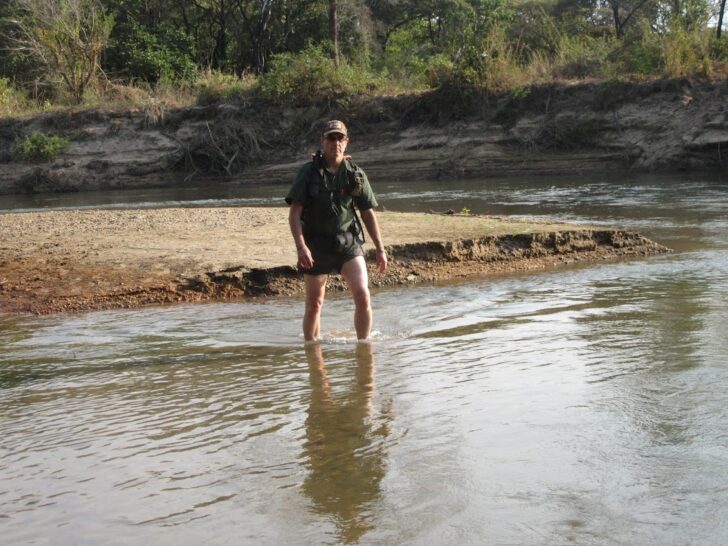
In the shallow, clear water on the other side and under the cover of tall grass, we took turns bathing in our own private spa! Afterward, we made breakfast and relaxed while our freshly washed clothes dried in the sun.
Clean, refreshed, and fed, we cheerfully turned south. But after several hours of steady walking in the intense sun, the cheer factor was decreasing, so we rested along a shady bank of a small, dry stream. There, we refilled bottles with filtered water from holes we dug in the sand.

Late that afternoon, we arrived at the Department of National Parks and Wildlife’s remote Bush Baby Ranger Camp and checked in with park authorities, then set up camp at a nearby stream.
Donning my headlamp, clearing a sleeping spot, and hanging my mosquito net, I picked my way through the brush to the small, narrow stream to bathe. Returning to camp clean, I ate and fell asleep under the stars, listening to the sounds of the evening and thinking of the day’s trek.
After an hour of deep sleep, I was awakened by a small sharp bite on my foot, then another on my leg, and another on my waist. Suddenly I was being bitten all over. I turned on my headlamp and jumped up. To my horror, army ants were everywhere! All my gear and sleeping area were being raided. I was covered in ants from head to toe and could even feel them crawling in my hair. Doing the “ant dance,” I jumped out from under the mosquito net and tore off my clothes. To hell with modesty, I had to get them off fast.
Seeing me dance around half-naked and yell in a staccato of shrieks and swears, the rangers came to my rescue. Working from experience, they quickly cleaned my gear and then spread campfire coals and ash around the campsite to prevent the ants from marching through the entire camp. Apparently, when foraging, army ants don’t like ash and won’t pass through it. As quickly as they arrived, the ants turned and marched on in a different direction. The rangers later told me that if I had not gotten up, the whole troop of ants would have covered me and tried to eat me alive like they do a caterpillar or anything else living that gets in their way. It took a long time for the sensation of ants crawling over my body to go away.
During the first half of Day 4, we walked 16 miles south toward the Luwi River, following a slight rise that divides it from a tributary. The midday break found us resting in the shade of large fig trees overlooking the river and enjoying the wild fruit with our lunch. From there we decided to take off our shoes and give our battered feet a revival, walking barefoot in the riverbed for the rest of the day, walled by angled and undulating orange sandstone.

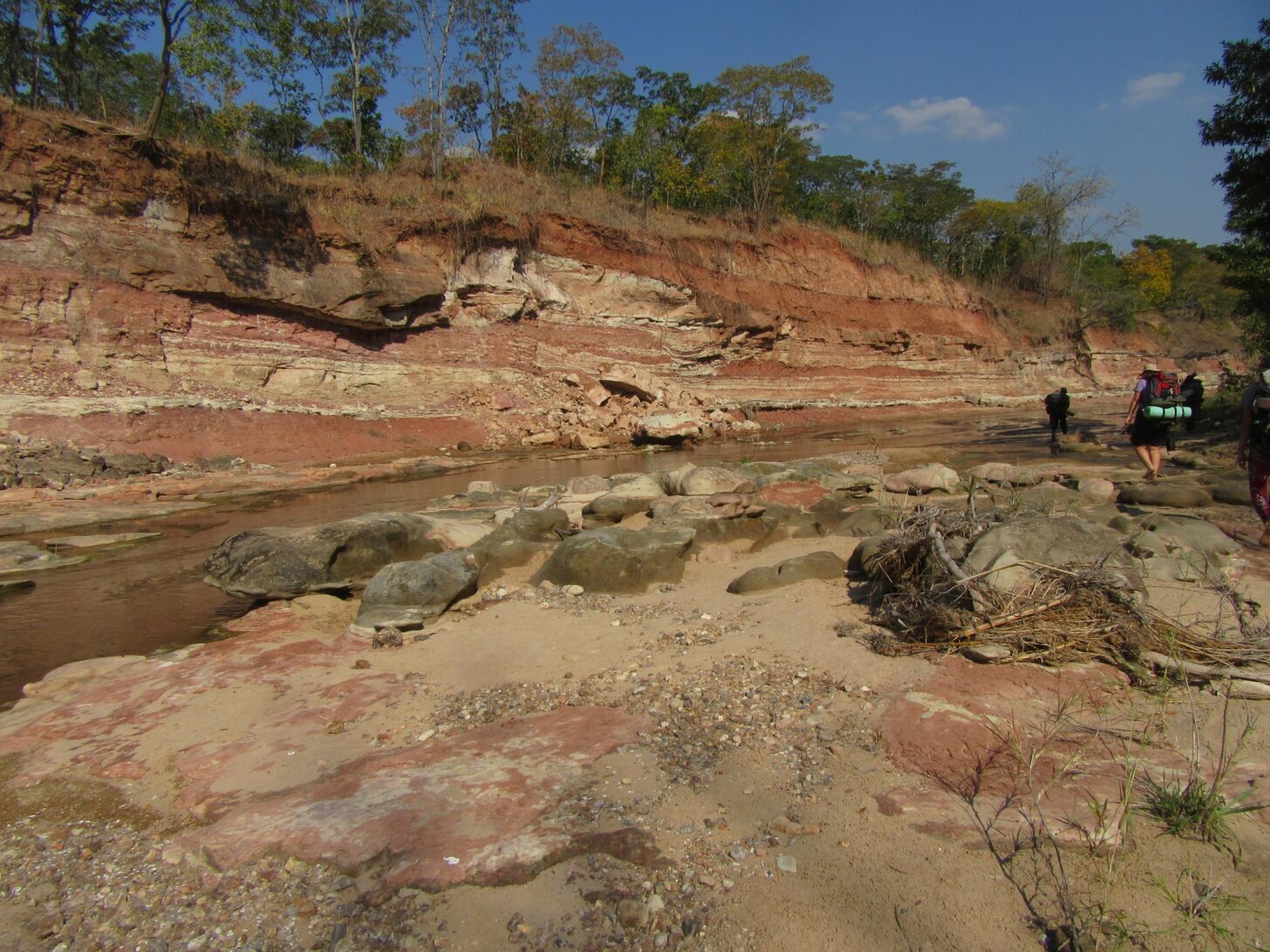
Camping that night near a three-way confluence on a narrow sugar-white sand bar, we had a front-row seat to the Southern Cross constellation and shooting stars, which diverted my thoughts from the lion, leopard, and elephant tracks that crisscrossed the river bottom around us.
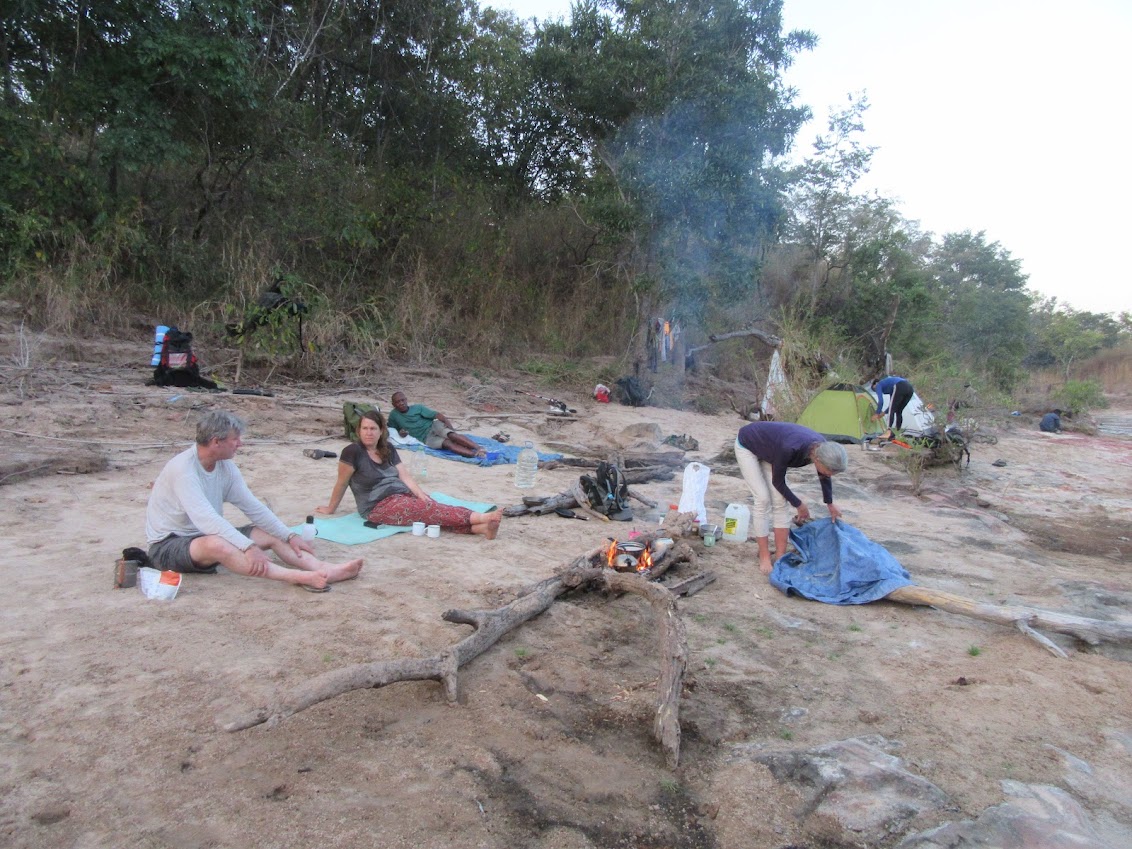
The Home Stretch (Days Five and Six)
Late in the dry season, it gets hot and water becomes scarce, increasing chances of encountering wildlife around water sources. In the privacy and shade of the tall grass along the rivers, we stayed alert as we walked, preferring to avoid startling a resting animal. We didn’t want to be charged at close range (or any range).
At one point on day five, we emerged onto an exposed river bank to the surprise of a family of six elephants across the river. Within seconds, the elephants trumpeted, flared their ears, and rushed away to the protection of the forest. Even though we were more than 50 yards away and on the other side of a river, they weren’t waiting around to determine our intentions. Similarly, other animals (hartebeest, buffalo, impala, puku) noticed us and disappeared quickly. Humans are dangerous.

We camped on a tree-lined high point with a good view across the braided river. A spectacular burnt-orange sunset silhouetted elephants crossing far upstream and impala casually munching away on the opposite bank. The deep roar of lions calling into the night reminded us that this is their territory and we are just visitors.

The last day was arduous. It was hot (105 °F) in the Luangwa Valley and we had a long way to go. Shade was sparse so we walked fast. Each hour we took a break to rest and get out of the intense tropical sun. The gnats and tsetse flies were swarming so bad that I had to cover my head and face with my bandana to get a break, and leaned back on my pack to “rest my eyes.”

As we passed the 1,500-year-old Big Baobab tree, a well-known park landmark, we knew we were close to our destination. Baobab trees are respected throughout Africa for their many uses, age, shape, and nutritious fruit. The Vitamin C-loaded fruit fueled us forward.

With two coolers of cold drinks waiting, our friend and long-time park guide, Jason Alphonse, was an oasis. Dropping our packs, we leaned against his Landcruiser and cooled down with a cold beverage before the last few miles. We were in the heart of the park and surrounded by abundant wildlife, including at least two prides of lions, leopards, wild dogs, hyena, elephants, buffalo, giraffe, zebra, and various antelope. We hurried thought the last few kilometers (1-2 mi.) to the Luangwa River and the SLNP main gate. A massive herd of buffalo, highlighted by zebra, impala, hippos, and elephants, bid us farewell.


This rare opportunity to walk across one of the best national parks in Africa tops my list of life highlights. Whether navigating our way through the Machinga Escarpment, pushing our way through elephant grass twice as high as a person, or digging for fresh water, I felt a sense of achievement that only comes from completing a long, hard trek.
The vast landscapes and roaring lions at sundown were fantastic, but the shared memories and friends I made during the trip way will stay with me forever.
Related Content
- more by Jeff de Graffenried
- explore more trip reports and stories at Backpacking Light
- Jeff’s Hyperlite Mountain Gear Windrider 2400 was his choice for our 2021 Staff Picks article. Check it out.
DISCLOSURE (Updated April 9, 2024)
- Product mentions in this article are made by the author with no compensation in return. In addition, Backpacking Light does not accept compensation or donated/discounted products in exchange for product mentions or placements in editorial coverage. Some (but not all) of the links in this review may be affiliate links. If you click on one of these links and visit one of our affiliate partners (usually a retailer site), and subsequently place an order with that retailer, we receive a commission on your entire order, which varies between 3% and 15% of the purchase price. Affiliate commissions represent less than 15% of Backpacking Light's gross revenue. More than 70% of our revenue comes from Membership Fees. So if you'd really like to support our work, don't buy gear you don't need - support our consumer advocacy work and become a Member instead. Learn more about affiliate commissions, influencer marketing, and our consumer advocacy work by reading our article Stop wasting money on gear.

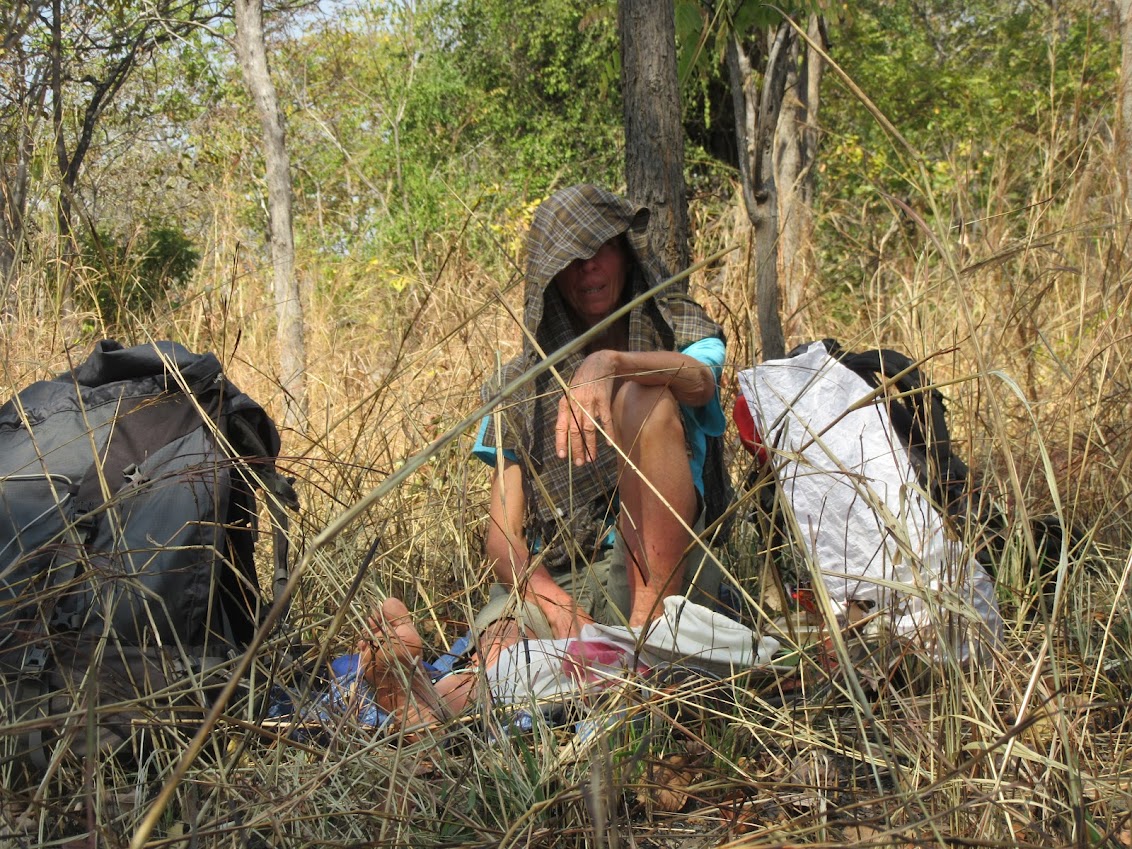


Home › Forums › Walking the Great Rift Valley